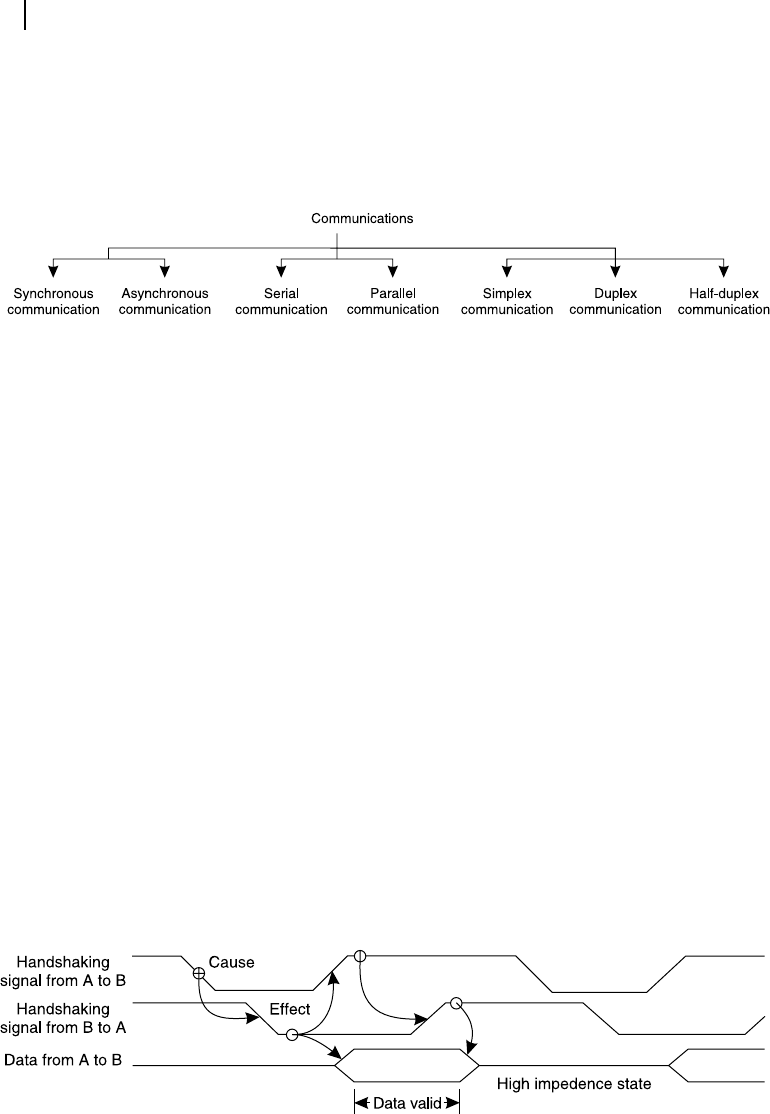
240 Computer Architecture and Organization
8.2.2 Classification of Communication
Depending upon various characteristics, classi cation of data communication adopted in computers is
presented in Figure 8.2 . The technique of data transmission in programmed I/O and interrupt driven I/O
is generally asynchronous, and during DMA it is synchronous. Moreover, for some peripheral devices the
data communication might have to be in serial format, while for other cases it might be in parallel format.
Figure 8.2 Classification of data communication used in computers
In simplex communication, the direction of data transfer is always unidirectional, while in full-
duplex communication it is always bidirectional. In half-duplex communication the data transmission
is bidirectional but time-shared, i.e., unidirectional at any time. We now discuss some features of asyn-
chronous communications and serial and parallel communications before discussing details of pro-
grammed I/O and interrupt driven I/O.
8.3 ASYNCHRONOUS DATA COMMUNICATION
In Section 2.4.2, we have placed some initial comments about the external bus and introduced the term
‘asynchronous communication’, indicating that details pertaining to those would be discussed in this
chapter. In general, data communication within computers might be of two types, synchronous com-
munication and asynchronous communication.
In synchronous communication, a common clock governs the communication between any two
devices. The simplest example is the communication between the processor and its main memory,
where both processor as well as the memory unit must obey the system clock and complete the data
transaction as per prede ned schedule. The timing diagram shown in Figure 5.7 (Chapter 5) may be
taken as an illustrative example of this type of synchronous communication.
In asynchronous communication, two devices at two ends of data transmission have their own indi-
vidual clocks. Due to the absence of any common clock-source between these two, there cannot be any
prede ned time duration for completion of data transfer from one end to another. Therefore, in general,
help of some additional handshaking signals are sought out to complete the transmission.
8.3.1 Examples of Asynchronous Communication
Figure 8.3 Example timing diagram for asynchronous communication
M08_GHOS1557_01_SE_C08.indd 240M08_GHOS1557_01_SE_C08.indd 240 4/29/11 5:14 PM4/29/11 5:14 PM
..................Content has been hidden....................
You can't read the all page of ebook, please click here login for view all page.
